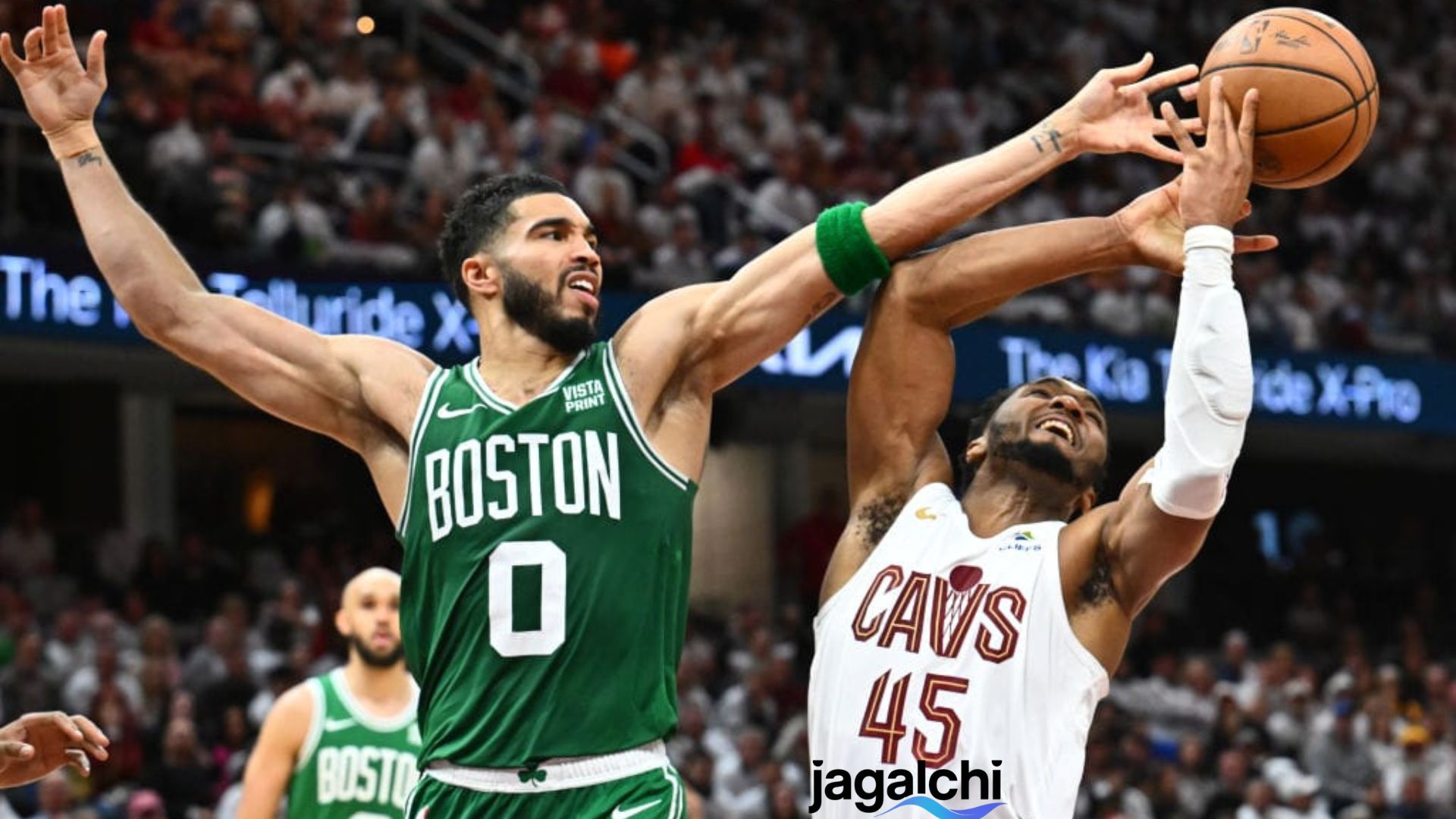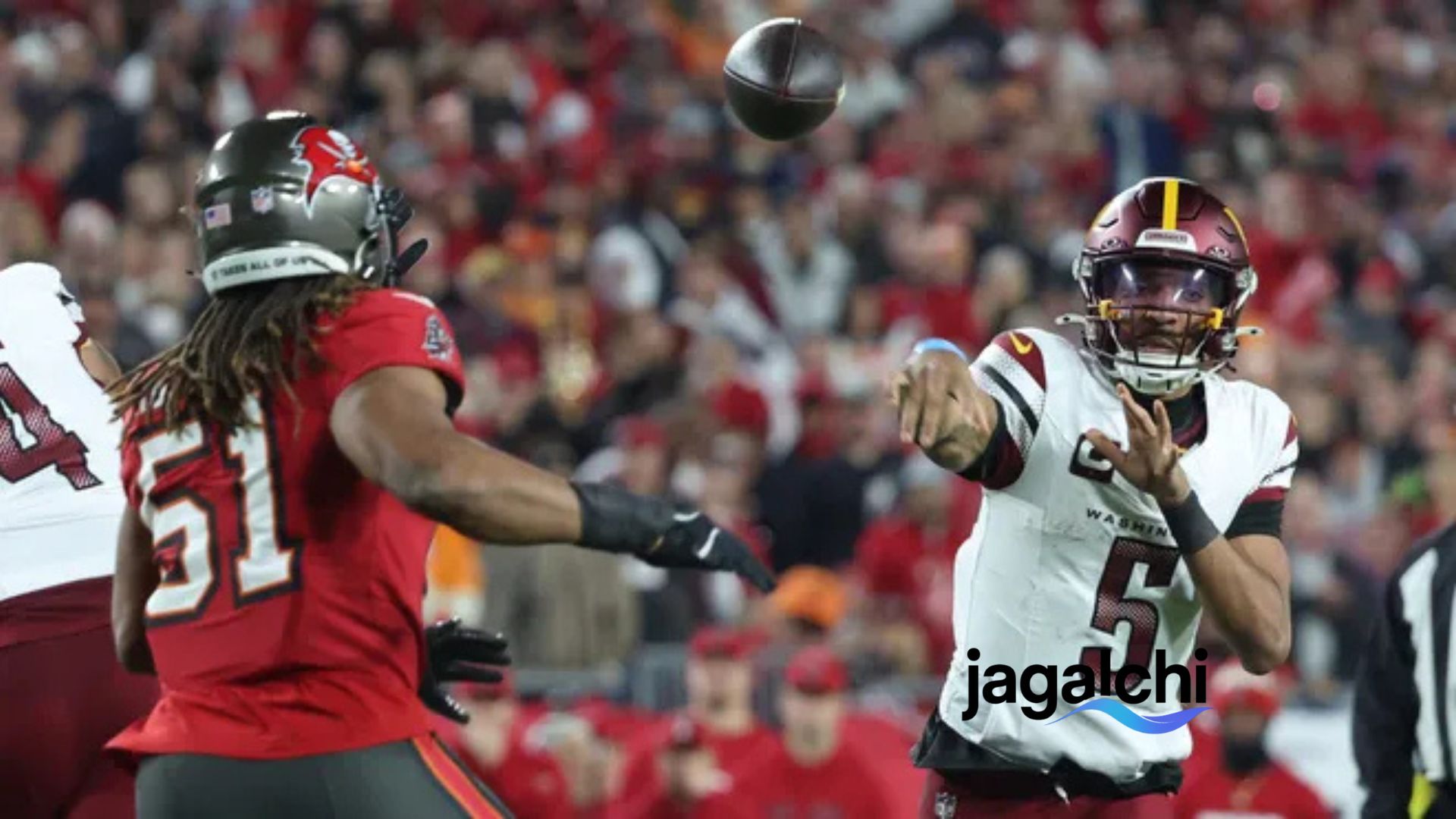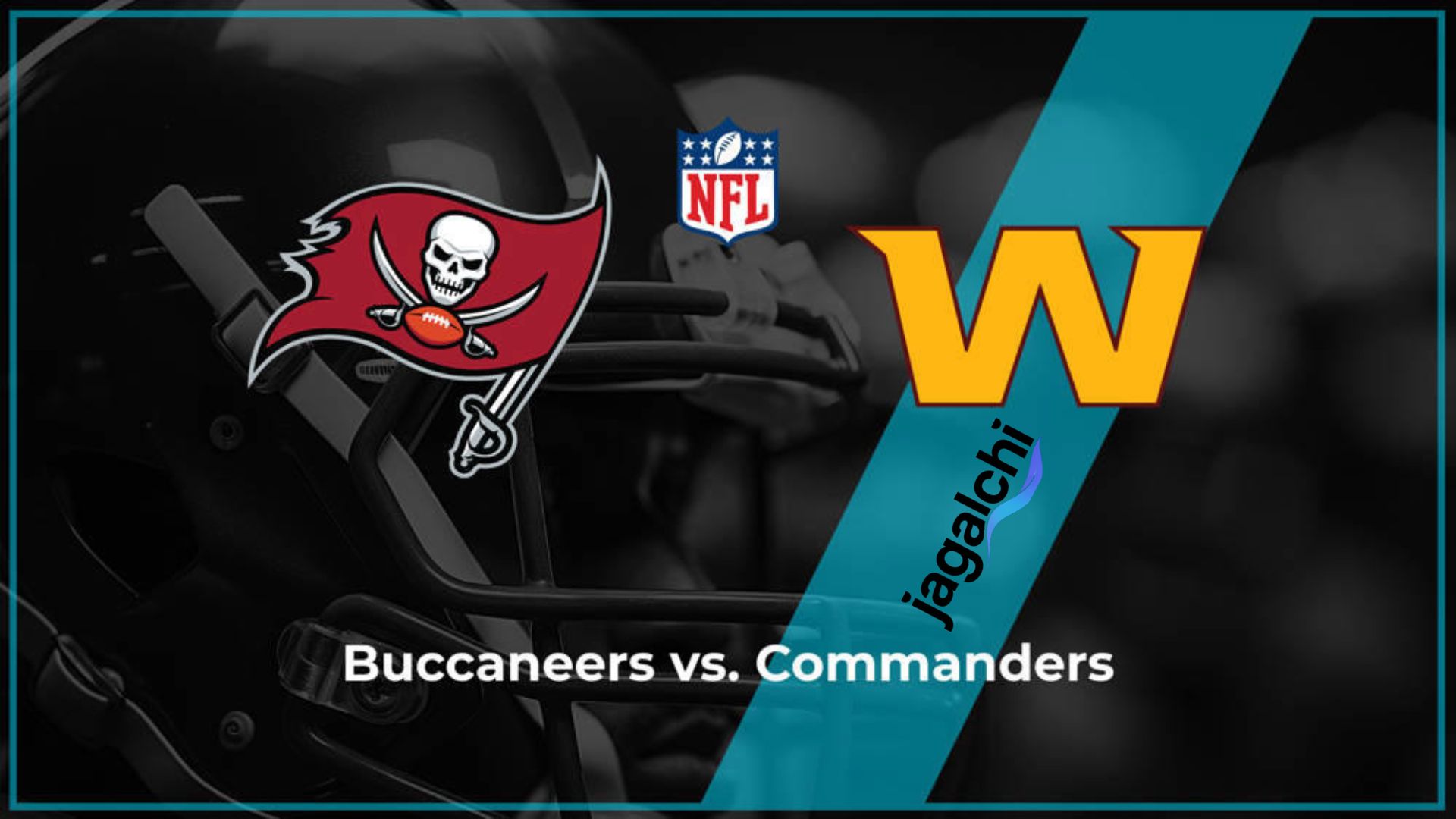Final Score: Cavaliers 123, Celtics 116
This was a high-stakes duel between two of the Eastern Conference’s best, and it had everything: a large early lead, a furious comeback, star performances, and tension down the stretch. Below is an in-depth breakdown on Cleveland cavaliers vs boston celtics match player stats.
Game Flow & Context: Cleveland cavaliers vs boston celtics match player stats
- Big early lead for Boston: The Celtics jumped out to an early advantage. Within the first quarter alone, they created a sizable lead (up to 22 points early)
- Cavaliers’ fightback: Cleveland, despite being down by as much as 22, chipped away and mounted a comeback, taking over in the fourth quarter.
- Lineup/injuries factor: Boston was missing some rotation pieces—Kristaps Porziņģis (illness) and Jrue Holiday (hand) were unavailable.
- Season implications: Cleveland’s win extended their hot streak (9 straight wins) and bolstered their already top-tier record in the East. Boston, already strong, faced a tough loss, especially at home.
Key Player Performances
Here are the standout individual performances, and how those shaped the outcome.
| Player | Team | Key Stats | Analysis |
| Donovan Mitchell | Cleveland Cavs | 41 points, with 26 in the second half; 13-of-26 FG; 10-of-11 from free throw; big shots in 4th round. | Mitchell was the engine of the comeback. His scoring surge in second half (especially fourth quarter) switched momentum. Efficiency (despite volume) was good: hitting free throws, making plays in critical moments. Without him, Cavs likely don’t erase 22 points. |
| Jayson Tatum | Boston Celtics | Season-high 46 points, 16 rebounds, and 9 assists. Shot 19-of-37 from the field. Added 3 blocks. | Tatum continued his scoring dominance — he kept Boston in command for much of the game. He was doing everything: scoring, facilitating, rebounding, defending. But his high usage didn’t translate into a win, largely because Boston couldn’t get enough help, or secure the momentum when it slipped. |
| Jaylen Brown | Boston Celtics | 37 points. Also, he made the shot to tie the game at 114–114 with ~3:15 to play. | Brown had strong scoring output and showed up in clutch moments. That tie-up shot was big in the late game. However, he couldn’t stop the Cavaliers’ surge after that. Boston needed more from other role players. |
| Evan Mobley | Cleveland Cavs | 17 points, 12 rebounds. Also made that timely three to give Cleveland their first lead in the game at 104–101 in the fourth. | Mobley’s impact was not just statistical but timely. His three-pointer broke Boston’s stranglehold, which had been almost permanent till then. He also pulled down boards, helped in defense. For Cavs to make the comeback, they needed contributions from elsewhere beyond Mitchell—and Mobley provided. |
| Darius Garland | Cleveland Cavs | 20 points. | Not as spectacular as Mitchell, but provided support. Good scoring when needed and played his part in keeping the pressure on Boston. Look for Cleveland cavaliers vs boston celtics match player stats. |
| Others / Role Players | Both | Boston missed some supporting production—absence of Holiday, Porziņģis hurt their depth. Cleveland’s bench (and supporting cast) stepped up. | In tight games, bench differential and role player impact often make the difference. Cavs got critical buckets, rebounds, defensive stands from their supporting cast. Boston seemed a bit thin when the game tightened. |
Statistical Insights & Turning Points
- Second Half Surge by Cleveland
Cleveland’s run didn’t begin in the fourth alone but they overturn Boston’s large lead mostly during second half. 26 of Mitchell’s 41 came post-halftime, showing Boston’s defense couldn’t contain him down stretch. - Boston’s Hot Start — Then Cooling Off
Boston shot well early, created separation, especially in the first quarter. However, as the game progressed, issues emerged: defensive breakdowns, inability to close out, allowing Cavs to feed off turnovers/momentum swings. Also, missing starters probably taxed their role players. - Clutch Moments & Momentum Swings
- Evan Mobley’s three to take the lead for the first time for Cleveland at 104–101 in the fourth was a critical blow.
- Jaylen Brown tying it at 114–114 showed Boston still had fight, but then Mitchell’s floater pushed Cleveland ahead, followed by Cavs doing what required to seal.
- Cleveland’s ability to avoid collapse in the fourth quarter—something big teams must do; this showed mental toughness.
- Efficiency Under Pressure
Mitchell’s free throw shooting (10-of-11), high usage yet decent field goal conversion (at least from what’s reported) gave stability. Meanwhile, Boston had to take many shots (Tatum had 37 attempts) to maintain scoring, possibly inefficient, especially when defenses tightened. - Rebounding and Size Matchups
While specific rebound differentials are not fully spelled out in all reports, Mobley’s double-digit rebounding suggests he helped limit second-chance points. Boston’s size issues (missing Porziņģis) may have made defensive rebounding harder. Also, Cavs’ grabbing momentum with boards likely contributed.
What Went Right, What Went Wrong
| For Cleveland | For Boston |
| What worked | What worked |
| • Star leadership: Mitchell took over when it mattered. • Depth contributions: Mobley, Garland, bench stepping up. • Resilience: reversed a large deficit. • Execution down stretch – hitting free throws, taking shots decisively. | • Strong first half: Boston built a big lead. • Tatum & Brown carried scoring load. • Good offensive starts, especially from range early. |
| What failed / hurt them | What failed / hurt them |
| • Lapse early resulting in deficit (must improve starting quarters). • Defense in third / early fourth – allowed Boston to keep leads and momentum. • Could have been more efficient earlier to reduce pressure. | • Inability to respond to Cavs’ run in 4th. • Breadth hurt: missing role players and bench depth showed. • Couldn’t stop Mitchell or Mobley at critical moments. • Offensive inefficiency as pressure rose. |
Statistical Highlights
Here are some summary stats (from the reports) that illustrate how close and competitive this game was:
- Mitchell: 41 points, 13/26 FG, free throws almost perfect.
- Tatum: 46 points (season high), 16 rebounds, 9 assists. High usage.
- Brown: 37 points; also crucial in later stage.
- Mobley: 17 points, 12 boards including timely three.
- Cleveland’s Road Performance: Extended their road win streak and general consistency.
- Boston’s Home Record: Lost at home despite strong effort, missing key rotational players.
Tactical / Strategic Takeaways
- Boston’s dependence on stars: Tatum (and Brown) needed to carry majority of scoring load. When Cleveland shifted defensive attention or when shots weren’t falling, Boston did not have enough secondary options (especially with Holiday / Porziņģis out).
- Cleveland’s adaptability: Coach adjusted to early deficit, trusted Mitchell in crucial stretches, got help from Mobley and others; showed good mixture of inside-out play (Mobley, Mitchell drives) and clutch shots.
- Game management in clutch time: Cleveland executed better in final minutes—both in offensive sets and defending Boston’s attempts according to Cleveland cavaliers vs boston celtics match player stats.
- Mental resilience: Being down 22 is demoralizing, yet Cavs didn’t panic, handled pressure. Boston, conversely, had to protect a big lead, which is psychologically and tactically difficult.
What This Means Going Forward
- For Cleveland:
This game is a statement. Not only do they have star power, but also resilience and depth. If they can replicate this in future matchups (especially in playoff-like pressure), they’re serious contenders. Wins like this build confidence.
- For Boston:
The loss exposes vulnerabilities—depth/role players, responding under pressure, and closing out leads. Also, injuries will matter. They may need better rotation management, improved offense under pressure, defensive adjustments when opponents shift momentum.
- Eastern Conference balance:
This result strengthens Cavs’ position near the top. Boston still remains dangerous, but this gives Cleveland an edge in tiebreakers / psychological advantage.
Comparable Past Game: Feb 4, 2025 Celtics vs Cavs
Looking briefly at their earlier meeting on Feb 4, 2025, which the Celtics won 112–105:
- Jayson Tatum had 22 points, Derrick White had 20.
- Cleveland had solid performances, but couldn’t contain Boston in late stages.
- That game foreshadowed this matchup: Boston playing well early, Cavs striving to catch up; the later game reversed the trend for Cleveland.
Player Stats Deeper Dive
Here are more nuanced observations on player stats beyond points:
- Field goal attempts vs efficiency: Tatum’s 19-of-37 is about 51.4% (not exact but roughly), showing he was aggressive. High volume attempts mean fatigue / defense pressure may affect efficiency late. Mitchell, making 13-of-26, shows efficient scoring under pressure. Big difference is the support for the stars on Cleveland cavaliers vs boston celtics match player stats.
- Free Throws: Mitchell’s near-perfect free throw shooting in critical moments—free throws are often overlooked but clutch. Boston, less so in reports, may have missed some late free throw opportunities / given up fouls that hurt momentum.
- Rebounding & Second Chances: Mobley’s 12 boards helped deny Boston second chance points. Boston’s missing bigs role may have made them vulnerable on boards and in the paint. Every rebound late is magnified in tight games.
- Turnovers & Defensive Stops: While exact turnover numbers are less reported in all media, momentum shifts often come from steals, blocks, defensive rebounds. Cleveland made enough stops late; Boston perhaps failed to lock in defensively when needed.
What Could Boston Have Done Differently?
- Slow down the pace when they had the lead—try to run more clock, control possessions.
- Use closer offensive sets in fourth quarter; avoid isolation-heavy sequences that Cavs could anticipate.
- Rotate in bench / role players earlier to keep starters fresh for final stretch.
- Defensive schemes to disrupt Mitchell: double-teaming or switching guards; force him into contested shots or to pass.
- Manage fouls better—avoid giving Cavs free opportunities late.
Predictions / Implications for Future Matchups
- If these two meet again in playoffs, expect Boston to retool their game plans (especially defensively) to limit Cavs’ comeback ability. Cleveland will trust Mitchell, but may push more off-ball actions to keep Boston defenders moving.
- Role players will be even more critical. For Boston, getting more consistent bench production may swing future tight games. For Cleveland, maintaining depth and avoiding fatigue will be key.
- Psychological edge at Cleveland cavaliers vs boston celtics match player stats: this comeback win gives Cleveland confidence in close games; Boston may feel pressure in future when they build early leads, to avoid repeating such collapses.
Conclusion
The Feb 28 game between Cleveland cavaliers vs boston celtics match player stats encapsulated many of the season-long narratives: star power (Mitchell, Tatum, Brown), depth, momentum swings, and the fine margin between victory and defeat.
Cleveland’s win was powered by resilience, clutch shot-making, and timely contributions beyond just their leading scorer. Boston’s strong start and high-end individual performances were undermined by a lack of support in pressure moments and inability to hold off a battle-tested opponent.
For fans and analysts alike, this matchup highlighted what separates good teams from great ones: not just talent, but execution under duress, depth, and mental toughness. As both teams head deeper into the season, the lessons from this game will linger — for Cleveland as reinforcement of their strengths; for Boston as a call to shore up their weak spots.




